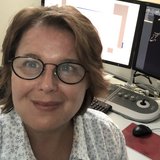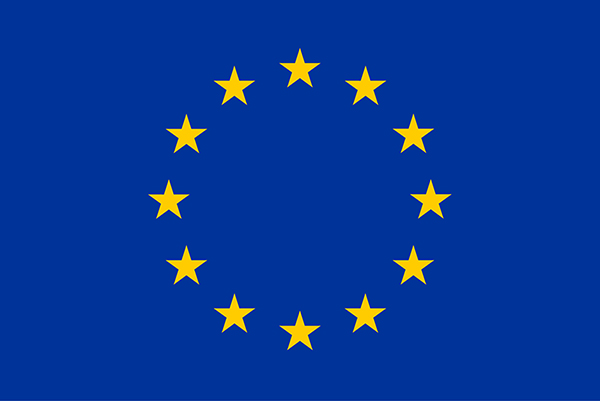
Nathan Adams
Nanotemper Technologies, DENanotemper Technologies GmbH
Floessergasse 4, 81369 Munich, Germany
Email: nathan.adams@nanotempertech.com
NeuroTrans project: Develop novel approaches to measure transporter-ligand interactions (project 8)
ESR: Anton Turaev
ORCID
Website: Nanotemper Technologies
Target
At NanoTemper Technologies (NTT) we create biophysical tools for scientists to tackle their challenging characterizations. Within the High Throughput Screening Group at NTT, our goal is to use physical and software automation to increase the efficiency and subsequent throughput of our devices to help create a world where every disease is treatable. Our technologies can characterise the both the stability of a protein or biomolecule (nanoDSF, DLS, SLS), but also its binding with partners using a variety of modalities (TRIC, isothermal spectral shift, nanoDSF).
Within the NeuroTrans ETN we are using our newly develop isothermal spectral shift technology to characterise the both the equilibrium binding and thermodynamics of ligand binding to transporter proteins.
Main areas of research
• Protein-ligand binding and stability
• Site specific labelling and modification of proteins
• Automation design and implementation
• Elucidation of metabolons within metabolic pathways

Andre Bazzone
Nanion Technologies, DENanion Technologies GmbH
Ganghoferstr. 70A, 80339 Munich, Germany
Email: andre.bazzone@nanion.de
NeuroTrans project: Electrophysiological characterization of neurotransmitter transporters and formulation of an overall kinetic model (project 5)
ESR: Rocco Zerlotti
ORCID
Website: Nanion SURFE2R
Andre holds a diploma degree in Biochemistry from Goethe University in Frankfurt. He did his PhD in Biochemistry at the Max Planck Institute of Biophysics, studying sugar transporters using electrophysiology as well as radioactive- and fluorescence-based techniques. His PhD Supervisor is one of the inventors of SSM-based electrophysiology, the technique behind Nanions SURFE2R instruments. That’s why he started as a Scientist with Nanion directly after his PhD in 2016.
Nanion Technologies
Nanion is a Biotech company specialized on the development of electrophysiological measurement instruments which help researchers investigating ion channels and electrogenic transporters. Our devices are used for functional characterization of these targets in basic research, but also for drug screening applications in pharma industry. Nanion has a large R&D department with more than 30 highly qualified electrophysiologists and a lot of lab space. We collaborate with universities and other industry partners in different scientific projects.
Research at Nanion
When it comes to research, our main interest is to expand the use of our instrumentation to different research fields and targets. So far, we have studied more than 50 different transporters, amongst them neurotransmitter transporters such as the GABA transporter GAT and the glutamate transporter EAAT3. With NeuroTrans we want to expand our knowledge within this field by applying our SURFE2R technology to other neurotransmitter transporters such as the dopamine transporter DAT and the serotonin transporter SERT.
Method
Nanion provides several instruments for electrophysiological characterization of membrane channels and transporters. The SURFE2R (Surface Electrogenic Event Reader) instrument has specialized on the measurements of membrane transporters and ion pumps. This technology is based on gold coated sensor chips. Membrane samples containing the transporter of interest are added to these chips. The SURFE2R then performs a fast solution exchange providing the substrate for the transporter of interest. The substrate activates the transport process and subsequent charge translocation is measured in real-time. Results are displayed within our SURFE2R software. The data can be analysed in various ways and contains information about the transport mechanism and transporter kinetics.
Lab Capabilities
- Cell Culture
- Sample preparation and purification of membranes
- Functional measurements on electrogenic transporters, ion pumps and ion channels
- Automated patch-clamp, bilayer recordings, SURFE2R recordings

Elena Bossi
University of Insubria, ITDepartment of Biotechnology and Life Sciences
University of Insubria
Via J.H. Dunant 3, 21100 Varese, Italy
Email: elena.bossi@uninsubria.it
NeuroTrans project: Electrophysiological approaches to study ion coupling and transport by NSS (project 6)
ESR: Manan Bhatt
CV
ORCID
Website: University of Insubria
Target
Structure-function relationships of membrane proteins involved into the reuptake of neurotransmitters, nutrient and divalent cation (SLC6, SLC11, SLC15).
These proteins are studied using electrophysiology, molecular biology immunochemistry, HPLC and optical techniques. The main goals are the functional characterization, the pharmacology and the identification of the structural determinants of ion and substrate selectivity.
The molecular mechanism of substrate translocation is mainly investigated with biophysical approach, studying the different kinds of current elicited by the transporters.
The modulation of transporters activity by extracellular signals and second messenger pathways is also addressed.
Recently the nanoparticle membrane crossing was studied in Xenopus laevis oocytes by investigating biophysical parameters coupled to fluorescent approach (SOFA, single oocytes fluorescence assay).
Method
The research activity involves the use of several state-of the art methodologies, including heterologous expression in oocytes and in cell lines, patch-clamp, voltage-clamp, confocal microscopy, fluorescence resonance energy transfer, caged–compounds photolysis, fluorescent ion indicators, green fluorescent protein constructs, site-directed mutagenesis, immunochemistry (SOC, western Blot and immunohistochemistry) as well as other techniques in molecular biology and cell culture. Quantitative biophysical analysis of the different transport currents aims to obtain detailed description of transporter function and transport cycle steps.
Main areas of research
- Functional characterization of membrane transporters wild type and mutants
- Transport cycle: substrate transport at the molecular level
- Transporter interactions with substrates and inhibitors

Eurico Cabrita
NOVA University of Lisbon, Faculty of Science and Technology, PTApplied Biomolecular Sciences Unit (UCIBIO)
Faculty of Sciences and Technology
Universidade NOVA de Lisboa
Campus Caparica, 2829-516 Caparica, Portugal
Email: ejc@fct.unl.pt
NeuroTrans project: NMR based structural and dynamic investigation of the transport cycle of NSS transporters (project 2)
ESR: Alberto Daminato
ORCID
Website: Cabrita Lab at NOVA
Target
The main purpose of the Cabrita lab is the study of intermolecular interactions in chemical and biological systems to rationalize molecular recognition processes at atomic resolution. One of the key objectives is the study of protein-ligand interactions for the design, optimization and understanding of the action of drugs. For this purpose, we employ nuclear magnetic resonance techniques that allow to determine ligand epitopes and binding poses and to identify protein residues involved in recognition and binding, as well as changes in protein conformation and dynamics. This information allows to build structure/activity relationships, crucial to achieve a comprehensive understanding of the function of the systems studied. Recently our research efforts have been focused in the optimization of experimental conditions to study protein-ligand interactions of membrane proteins in close to native environments and in the study of glycan-protein interactions in systems related to aberrant glycosylation in cancer.
Method
The key method used for research is nuclear magnetic resonance spectroscopy (NMR). Liquid-state NMR spectroscopy, allows for direct observations of NMR-active nuclei and can be employed to investigate the structures of small molecules or appropriately-labelled biomolecules. Most atomic nuclei in natural substances, with the exception of protons (1H), are NMR-insensitive and cannot be detected by NMR methods. Therefore, these nuclei are substituted with stable NMR active isotopes to make them NMR ‘visible’. Isotope labelling is a routine procedure in biomolecular NMR spectroscopy that usually requires labelling all residues of a protein with 13C and 15N. However, depending on the problem being investigated more sophisticated schemes have been devised to introduce NMR-active isotopes at specific protein positions (i.e. segmental labelling, site selective labelling), or at subsets of amino acid residues (i.e. residue-specific labelling). Together, these techniques allow us to either visualize whole proteins, or to engineer NMR observables at specific protein sites. With this tools NMR can directly assesses the conformational and functional properties of proteins in many different contexts.
Main areas of research
- Protein-ligand interactions with substrates and inhibitors
- Protein structure and dynamics
- Influence of the environment (solvent, osmolytes, salts, etc) in protein structure, dynamics and interactions

Thorben Cordes
LMU Muenchen, DEPhysical and Synthetic Biology
Faculty of Biology
Biocenter
Großhadernerstr. 2-4, 82152 Planegg, Germany
Email: cordes@bio.lmu.de
NeuroTrans project: Single-molecule studies of secondary-active transporters and their environmental dependence (project 11)
ESR: Despoina Kapiki
ORCID
Website: Cordes Lab at LMU Muenchen
Target
Membrane transport proteins play crucial roles in numerous cellular processes. Despite their importance, all proposed molecular models for transport are based on indirect evidence due to the inability of classical biophysical and biochemical techniques to directly visualize structural dynamics. This lack of data to validate mechanistic models for transport concerns both primary and secondary active transporters. The Cordes group is using single-molecule tools to decipher the molecular mechanisms of transport of these complex machines directly. This novel biophysical research area will support the development of new strategies against pathogenic bacteria or multi-drug resistant cancer cells.
Method
The Cordes lab “Physical and Synthetic Biology” specializes in the development and application of novel spectroscopy and imaging techniques that allow to map structure and function of biomolecules and (bio)chemical processes in space and time. For this the group uses a combination of optical techniques (single-molecule fluorescence spectroscopy & super-resolution imaging) with nanoscale sensors, i.e., fluorescent probes. The Cordes group follows a question-driven approach to gain insight into the molecular mechanisms of membrane transport and molecular motors, as well as chemical reactions and catalysis. Finally, the group is active in developing fluorescent probes and biophysical assays to characterize (bio)chemical processes and structures in vitro and in vivo.
Main areas of research
- Single-molecule studies of membrane transporters
- Structural dynamics and transport at the molecular level
- Assay and probe development
- Fluorescence microscopy and spectroscopy

Ulrik Gether
University of Copenhagen, DKDepartment of Neuroscience
Faculty of Health and Medical Sciences
University of Copenhagen
Maersk Tower 7.5.21, Blegdamsvej 3B, DK-2200 Copenhagen N, Denmark
Email: gether@sund.ku.dk
NeuroTrans project: Assessing the molecular determinants of novel disease-causing mutations in the dopamine transporter (project 15)
ESR: Anna Campana
Research Focus
Ulrik Gether’s lab has long-standing expertise in studying the molecular, cellular and physiological function of monoamine receptors and transporters. The key goals of his lab include i) dissecting mechanisms controlling activity and availability of the monoamine (dopamine, serotonin and norepinephrine) transporters and receptors in the synapse; ii) determining how these mechanisms are affected by disease and how they are modulated by drugs; iii) investigating how genetic variation in monoamine transporters and receptors contributes to diseases characterized by altered monoamine homeostasis; and iiii) developing genetic mouse models for these diseases and decipher the underlying disease biology. Currently, the main focus of Ulrik Gether’s research is on dopamine and on diseases characterized by dysfunctional dopamine homeostasis such as parkinsonism, ADHD, and addiction. We use advanced imaging tools (e.g. super-resolution microscopy and live single molecule imaging) and biochemical approaches to study the molecular organization of the monoaminergic presynapse including the role of synaptic scaffold proteins.
We use classical pharmacological tools, biophysical techniques and electrophysiology to investigate the molecular phenotype of disease-associated missense mutations in the monoamine receptors/transporters and we develop knock-in mice expressing selected disease mutations as putative novel model for dopamine pathologies. Ulrik Gether’s lab has linked missense mutations in the dopamine transporter (DAT) to early-onset parkinsonism and ADHD and it is expected that the efforts will provide important new opportunities for correlating discrete changes in dopamine homeostasis to disease characteristics. Parallel work involves use of chemogenetics and optogenetics to dissect cellular mechanisms and monoaminergic circuits responsible for the pharmacological actions of psychostimulants (e.g. cocaine and amphetamine) and ADHD medication.

Claus Løland
University of Copenhagen, DKLaboratory for Membrane Protein Dynamics
Department of Neuroscience,
Building 7, 5. floor
Faculty of Health and Medical Sciences
University of Copenhagen
Blegdamsvej 3, DK-2200 KBH N
Denmark
Email: cllo@sund.ku.dk
NeuroTrans project: Purification, functional characterization and reconstitution of DAT and LeuT (project 3)
ESR: Iris Elpida Kalenderoglou
CV
ORCID
Website: Løland Lab at the University of Copenhagen
Area of research
The main focus of the LølandLab is to elucidate the molecular mechanism underlying the function of neurotransmitter:sodium Symporters (NSSs). We wish to obtain a higher understanding of how these molecular motors are capable of transporting its substrate across the cell membrane and back into the presynaptic terminal. This includes how the process is coupled to the co-transport of Na+ and possibly Cl-, what role the ions have and which parts of this process that induces the protein conformational changes controlling the translocation mechanism. Compelling evidence also suggests that K+ is counter transported. We wish to elucidate this role and how it leads to an increased catalytic activity of the NSS.
A central part of this research is the elucidation of the binding sites for substrates, ions and inhibitors. We have a genuine interest in characterizing the binding mode of atypical dopamine transporter inhibitors (ADIs). They are interesting because they bind to the dopamine transporter as cocaine does, but they do not elicit any rewarding or stimulatory response, in fact, they can antagonize the effects of cocaine. This makes the ADIs good candidates for a medical treatment against cocaine addiction. We wish to seek out how they can do this.
An allosteric binding site is present in NSS proteins. We have been instrumental in the characterization of this site. Our ongoing research is focusing on the development of high-affinity allosteric ligands and elucidating how they can be used in the treatment of psychiatric diseases.
Methods
To address these issues, we use methods that include advanced biophysics on purified proteins and all aspects of biochemistry and molecular pharmacology on cell systems. We are able to purify membrane proteins from both bacterial (E. coli) and eukaryotic (HEK293expi cell suspension cultures) expression systems.
Specific methods include transition metal ion FRET, environmentally sensitive fluorophores, x-ray crystallography, microthermophoresis, protein reconstitution, nanodisc technologies, scintillation proximity assay, molecular pharmacology, cell-based transfection systems, standard molecular biology and biochemistry, etc.
Project
- Identification of the binding sites for ions in LeuT
- Elucidating the catalytic activity of LeuT substrates in reconstituted systems
- Identifying the factors and affinities requires for substrate transport in the dopamine transporter
- Investigating the conformational dynamics in the serotonin transporter with fluorescence
- Purification of the human dopamine transporter
- Site-specific incorporation of fluorescent probes using cysteine chemistry and unnatural amino acids

Fraser MacMillan
University of East Anglia, UKHenry Wellcome Unit for Biological EPR Spectroscopy
School of Chemistry,
University of East Anglia,
Norwich Research Park,
Norwich, NR4 7TJ
United Kingdom
Email: fraser.macmillan@uea.ac.uk
NeuroTrans project: Resolving coarse-grained dynamic distance constraints of the transport cycle of NSS transporters using EPR spectroscopy (project 12)
ESR: Petros Tsalagradas
ORCID
Researcher ID
Website: MacMillan Lab at University of East Anglia
Target
The Henry Wellcome Unit for Biological EPR at UEA employs advanced magnetic resonance approaches to identify and characterise molecular interactions. We currently focus on how bio-macromolecular assemblies function both in terms of the catalysis they perform as well as their role in transmembrane transport processes. Typically, we employ Electron Paramagnetic Resonance (EPR) and/or in combination with Nuclear Magnetic Resonance (NMR) spectroscopic techniques to study such interactions. Modern EPR spectroscopy is quickly developing from a rather niche biophysical technique to becoming a key tool in the structural biologists’ arsenal.
Method
Our group’s core expertise is the application and continued development of advanced magnetic resonance methods, but we also have expertise in a range of other biophysical spectroscopies and biochemistry. We also have some expertise in molecular biology.
Our EPR spectroscopic facility comprises:
- S-, X-, Q- and W-band cw-EPR,
- X- and Q-band cw-ENDOR (TRIPLE),
- X- and W-band pulsed EPR (ESEEM, HYSCORE, REFINE),
- X- and W-band PELDOR/DEER (iDEER),
- X-band pulsed ENDOR (TRIPLE).
Main areas of research
- Application of advanced EPR spectroscopy to dynamic molecular machines
- Site-directed spin labelling
- Characterisation of new spin labels for dipolar spectroscopy
- Development of dipolar spectroscopic methods in combination with novel and multiply labelled systems.
- Related spectroscopic techniques available at UEA (MCD, STD-NMR, SS-NMR)

Lisa Muiznieks
ELVESYS, FRELVESYS
Microfluidics innovation center
172 Rue de Charonne Bâtiment B2, 2ème étage
75011 Paris, France
Email: lisa.muiznieks@elvesys.com
NeuroTrans project: Development of a microfluidic cell perfusion station for controlled compound delivery and real time fluorescence monitoring (project 14)
ESR: Francesca Romana Brugnoli
Target
ELVESYS is an innovative company with expertise in flow management and microfluidic instrumentation. ELVESYS proposes the worlds widest brand of microfluidic flow control products - ELVEFLOW©. The main mission of the company is to provide state-of-the-art instruments to scientists to help them achieve major advances in their research field. The second mission is to facilitate the access of non-specialists (chemists, biologists) to microfluidics through the development of “plug and play” all-inclusive packs dedicated to specific applications. ELVESYS’ management team has already created 9 innovative companies related to microfluidics in the last 8 years.
Method
Our aim is the development of next-generation microfluidic and flow control instrumentation to help researchers to surpass the state-of-the-art in their scientific field. In the frame of the ESR project, we aim to develop a new instrument: a microfluidic cell perfusion station for high throughput cell culture experiments.
Main areas of interest
- Design microfluidic flow control setups for research applications
- Develop high performance microfluidic instrumentation
- Microfluidic packs – provide ready-to-use “plug and play” solutions to perform microfluidic experiments without the need of previous knowledge

Arwen Pearson
Hamburg University, DEInstitute for Nanostructure and Solid State Physics
Hamburg Centre for Ultrafast Imaging,
Universität Hamburg,
CFEL Bldg. 99,
Luruper Chaussee 149, 22761 Hamburg
Email: arwen.pearson@cfel.de
NeuroTrans project: Time resolved structural studies of membrane transporters (project 10)
ESR: Judith Estengre Pérez
ORCID
Website: Pearson Lab at Hamburg University
Target
Research in our group is focussed on understanding how biological macromolecules are able to carry out their functions, from catalysing chemical reactions and transporting small molecules and information across membranes. We take a structural biology approach to this challenge, developing the tools and technologies needed for time-resolved structural studies.
Method
The core expertise of the group is the development of methods for time-resolved X-ray crystallography, but we also have expertise in scattering, spectroscopy and biochemistry. We use neutrons, photons and electrons in our work. We also have expertise in synthetic organic chemistry, developing new photo cages for reaction initiation in time-resolved measurements. We co-operate the T-REXX end station at PETRA III with the EMBL. T-REXX is dedicated to time-resolved structural biology and has been in user operation since March 2019.
Main areas of research
- Development of methods for time-resolved serial synchrotron crystallography
- Synthesis & characterisation of new photocages for time-resolved studies
- Spectroscopy (UV-Vis, (r)Raman, THz)
- Protein dynamics

Harald Sitte
Medical University of Vienna, ATCenter for Physiology and Pharmacology
Institute of Pharmacology
Medical University of Vienna
Waehringerstr. 13A, 1090 Vienna, Austria
Email: harald.sitte@meduniwien.ac.at
NeuroTrans project: Characterization of the molecular mode of action of novel psychoactive substances (project 13)
ESR: Ana Sofia Alberto e Silva
CV
Publications
ORCID
Website: Sitte Lab at the Medical University of Vienna
Laboratory
The Sitte laboratory is interested in understanding the structure-function relationships in neurotransmitter transporters and their importance with respect to several disorders, such as neurodegenerative and neurodevelopmental disorders, and substance abuse disorders. At the molecular level, the lab focusses on understanding drug action, especially of new psychoactive substances, psychostimulants, and protein-protein interactions which are mainly studied by the use of fluorescence microscopy, fluorescence resonance energy transfer. In addition, the laboratory has specialized in the past ten years in the elucidation and confirmation of protein-protein interactions by mass spectrometry.
Harald Sitte is a medical doctor and has specialized in Pharmacology and Toxicology. He is a full professor for Psychopharmacology at the Medical University of Vienna.
Main areas of research
- Analysis of structure/function relationships in neurotransmitter transporters
- Trafficking behavior and clinical significance of neurotransmitter transporters
- Neurotransmitter transporter and associated proteins
- Psychopharmacology
- Cocaine, Amphetamine and Congeners – new psychoactive substances

Dirk Slotboom
University of Groningen, NLGroningen Biomolecular Sciences and Biotechnology Institute
University of Groningen
Nijenborgh 4, 9722RR Groningen, The Netherlands
Email: d.j.slotboom@rug.nl
NeuroTrans project: Structure and kinetic mechanism of neurotransmitter transporters (project 7)
ESR: Zaid R. Anshari
Slotboom ResearchInterest text
Background
Dirk Slotboom was trained as a chemist and did a PhD in microbiology. The group of Slotboom now combines biophysical (Structural biology, spectroscopy), biochemical (membrane enzymology) and microbiological methods to study the mechanisms of solute transport across membranes. He has made major contributions in elucidating the mechanism of the secondary-active (ion/coupled) glutamate/aspartate transporters and pioneered the study of a novel transporter families with unique dynamic behavior in lipid bilayers. In collaboration with organic chemists, small molecules are developed that inhibit the transport activity of bacterial transporters, with the aim to discover novel bactericidal or bacteriostatic compounds.
Methods
The key methods used for research are structural biology (X-ray crystallography and single particle cryo-EM), biochemistry (ensemble measurements of transport, building synthetic cell-like structures from purified components), and biophysics (single molecule FRET).
Main areas of research
- Mechanisms of membrane transport
- Bacterial vitamin uptake
- Glutamine transport by human ASCT2
- Neurotransmitter transport
- Lipid-protein interactions

Thomas Stockner, Coordinator
Medical University of Vienna, ATMedical University of Vienna
Center for Physiology and Pharmacology,
Institute of Pharmacology
Waehringerstr. 13A, 1090 Vienna, Austria
Email: thomas.stockner@meduniwien.ac.at
Phone: +43 (0)1 40160-31215
NeuroTrans projects:
Development of a comprehensive model of GABA transporter function (project 4)
Integrative modelling of ligand binding, transporter stability and the transport cycle (project 9)
ESRs:
Erika Lazzarin (project 4)
Leticia Alves da Silva (project 9)
CV
ORCID
Website: Stockner Lab at the Medical University of Vienna
Target
The core scientific research of the Stockner lab is centered at membrane transporters and includes the primary active ABC transporters family (ABCB1, ABCG2) and the secondary active neurotransmitter transporters (Neurotransmitter transporter, GABA transporters). The key objective is to achieve a comprehensive understanding of transporter function as well as the influence by membrane environment at the molecular level by developing experimentally verified structural transporter models, predict the mode of action of substrates and inhibitors, characterise conformational dynamics of the transport cycle, energy provision and importantly, derive the free energy profile of the transport cycle to elucidate the forces that energise.
Method
The key methods used for research are molecular modelling, molecular dynamics (MD) simulations and free energy calculations. These methods can in principle provide molecular insights with unrivalled time and positional resolutions, but require experimental data to provide verification. The Stockner lab investigates transporter function by using and interdisciplinary approaches by combining experiments with computational approaches to understand the dynamics and energetics and the transport cycle.
Main areas of research
- Structure and dynamics of membrane transporters
- Transport cycle: substrate transport at the molecular level
- Transporter interactions with substrates and inhibitors
- Enthalpy, entropy and energy coupling of transporters
- Direct comparison between experiment and theoretical approaches

Christine Ziegler
University of Regensburg, DEUniversity of Regensburg
Faculty of Biology and Pre-Clinics
Institute of Biophysics and physical Biochemistry
Structural Biology-Biophysics II
Universitätsstrasse 31, 93053 Regensburg, Germany
Email: Christine.Ziegler@biologie.uni-regensburg.de
NeuroTrans project: Molecular insights into the role of lipids and regulatory proteins on sodium coupling and inhibition of the GABA transporters BGT1 and GAT1 (project 1)
ESR: Laure Gauthier-Manuel
Target
Research in the Ziegler group focuses on molecular mechanisms underlying regulated membrane transport processes. In particular we emphasis on secondary transporters, gated ion channels and on protein complexes involved in stress sensing. Using both X-ray and electron microscopy in combination with AFM and FTIR spectroscopy, we have in the past investigated the sodium-betaine transporter BetP, a member of the LeuT-fold superfamily and the structurally related SLC6A12 betaine/GABA transporter BGT1, respectively. Both transporters display a lipid-dependent sodium and potassium coupling, which we have identify as unifying principles of regulated osmolyte transport in bacteria and mammals.
Method
Our experimental approach is based on cryo-electron microscopy - cryo-EM - (2D crystallography, single-particle analysis, and tomography/sub-tomogram averaging) and 3D crystallography in combination with biochemical and functional studies. Our group has expertise in bacterial and mammalian expression as well as in functional reconstitution of membrane proteins in detergent, amphipols, liposomes, nanodiscs and two-dimensional crystals. All structural projects are linked to functional characterization and cellular localization studies to draw a comprehensive mechanistic picture.
Main areas of research
- Molecular mechanism of sodium coupling in secondary transport
- Osmotic stress regulation of membrane transport
- Regulatory lipid interactions in transporters and channels
- Role of transport processes in virulence in human pathogens
